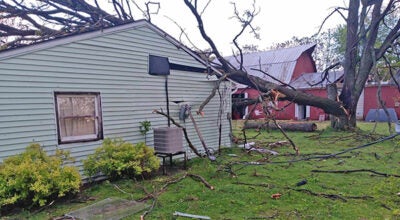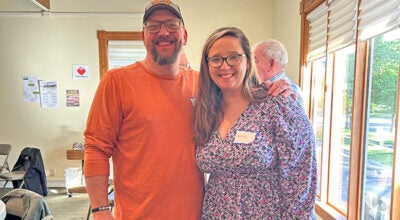Mormon youth unplug for pioneer trek
Published 5:30 pm Thursday, June 13, 2013

Kirsta Anderson, youth member of the Niles ward of the Church of Jesus Christ of Latter-day Saints, lives in Edwardsburg. A ward or branch is a community in which members develop friendships and help each other. A group of wards forms a stake.
CASSOPOLIS — Area youth members of the Church of Jesus Christ of Latter-day Saints (LDS) instead of plugging in are plugging along as they take part in a three-day pioneer trek re-enactment pulling hand-made hand carts.
Today and Saturday, close to 70 14- to 18-year-olds are experiencing an electronic–free environment while taking part in this pioneer journey through the forested area at the Edward Lowe Foundation in Penn Township outside Cassopolis.
Youth from southwestern Michigan and northern Indiana LDS churches are joined by “ma and pa” adult leaders to better appreciate what the pioneers endured in their expansion from the east coast to the Utah valley beginning in the mid-1840s.
“Our Pioneer Trek Youth Conference is designed to provide an authentic pioneer experience,” said Debrah Aber, South Bend Stake Pioneer Trek committee chairperson. “It places the youth in a situation where they can learn through experience to appreciate what they have, who they are and who they can become.”
Ten hand carts were built to replicate what pioneers used to transport their belongs in a more economical way than the more well-known horse- and oxen-pulled wagons.
Each pioneer family carried the bare minimum in personal belongs.
To replicate this situation each youth and leader has a five-gallon bucket to place their belongs into the 3×4-foot space on the floor of each hand cart.
Each participant will be dressed in pioneer clothing throughout the three-day event that started Thursday.
Women dress in skirts, long-sleeved blouses, dresses, bonnets, aprons and bloomers. Men wear canvas or cotton pants, long-sleeved shirts, hats and suspenders.
Each hand cart will be pulled by assigned groups placed in a family environment with others they might not know well.
“By assigning the groups with others unknown to them, this will give them an opportunity for new friendships, and team-building skills to develop,” Aber said. “An atmosphere of working together will be fostered as each group participates in the challenges faced while hiking through the woods, crossing streams and camping out under the stars. Every meal and activity will be conducted as closely as possible to what the actual pioneers had to experience.”
No one will be allowed to carry anything that isn’t authentic to that time period — including electronic devices.
During this time-out from the plugged-in world the pioneer trek committee states they hope that this will be seen as a spiritual experience and not just a recreational activity, and that the experience will help the youth appreciate the hardship of the early pioneers.
It is hoped they will take away with them a greater understanding of what it takes to be a pioneer, while leaving a lasting impression and legacy for each participant’s future.
“I am very excited to go on the trek. It will be a great experience to go through something similar to what the pioneers went through,” said Kirsta Anderson, youth member of the Church of Jesus Christ of Latter-day Saints Niles ward. “It will be great to get away from our different technologies. It will help us to strengthen our social skills and to reconnect with real people instead of screens.”
The groups will enjoy a hoedown dance at the end of the second day, since many pioneers relied upon supplying their own entertainment.
The trek will end with a testimony meeting and a re-enactment of the groups arriving into the Salt Lake Valley.






